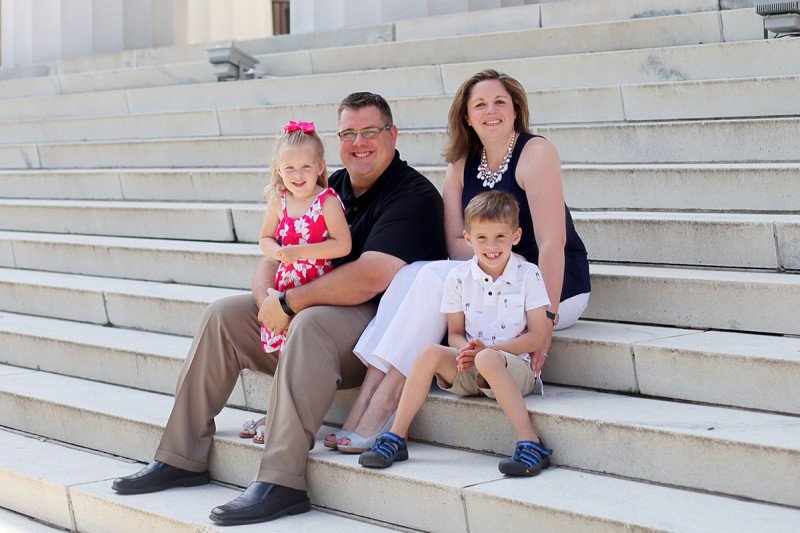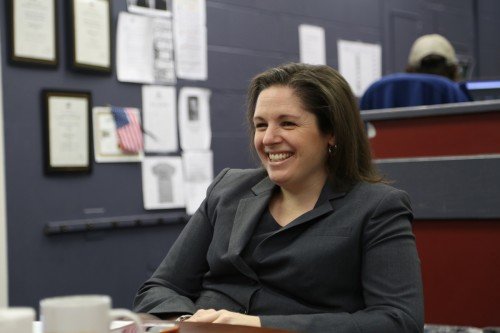
Editor’s Note:
A busy wife and mother in upstate New York, Christine Buttigieg was diagnosed with appendiceal cancer at a local hospital in 2015. Further testing at MSK revealed that the cancer had spread. After carefully weighing her options, she decided to receive treatment as part of a clinical trial. She shared her experience with us in 2016. But nine months after treatment ended, the cancer returned, and she came back to MSK for additional surgery and chemotherapy.
Now cancer-free for nearly five years, Christine is grateful to remain in good health and has made it a priority to live a healthy lifestyle. In fact, she recently hit her 70-pound weight-loss goal! She is also helping others diagnosed with appendix cancer by volunteering with MSK’s Patient and Caregiver Support Program. Below she updates us on how she coped with the cancer’s recurrence and her continued efforts to support the development of new therapies for people with this disease.
Since Christine Buttigieg first shared her story with us, she has found herself speaking with people from all over the country who want to know how she is faring. “People read my story and then find me on Facebook or call me at work,” she says. “It catches people off guard when they hear that the cancer came back.”
“Unfortunately, the majority of people treated for appendiceal cancer have a recurrence, and Christine was no exception,” says her MSK surgeon, Garrett Nash. He broke the news to her after a cancer screening in August 2016.
The recurrence came just nine months after she’d finished treatment. She’d had six months of chemotherapy. She had also participated in a clinical trial that included surgery and a heated chemotherapy. Called hyperthermic intraperitoneal chemotherapy, the investigational treatment delivered the drugs directly into the abdominal area immediately after the surgery.
Dr. Nash notes that “people with low-grade cancer have a lower risk of recurrence, and it takes longer for their cancer to return. Many people with intermediate-grade cancer, like Christine, and almost all people with high-grade cancer have a recurrence.”
When she first found out that the cancer had returned, Christine was terrified and overwhelmed. “It felt like it was game over. It was almost as devastating as the original diagnosis because after all that treatment, I seemed to be right back at ground zero,” she remembers.
The relief came when she spoke with Dr. Nash and found out she had options.
Grateful for Options
Not everyone is a candidate for additional surgery or chemotherapy. Christine, however, was eligible for both. She and Dr. Nash reviewed her options together. They decided on surgery followed by chemotherapy that would be administered directly into the abdominal area for three days after surgery.
It has been nearly two years since she completed treatment for the recurrence, and she is still showing no signs of disease.
Christine says she doesn’t look at the recurrence as a failure. “I was fearful that my kids wouldn’t have any memory of me,” she recalls. “But treatment has given me three years with them that I didn’t think I would have.”
Christine is hopeful that the additional surgery and chemotherapy have finished off whatever cancer was left. But she has done her homework. She understands that a second recurrence is possible.
“Dr. Nash is always up-front with me,” she says. “What brings me comfort is knowing that there are promising new developments that may help me down the road. It’s about buying yourself some time to get to the next newest treatment.”
Researching the Next Treatment for Appendiceal Cancer
The treatments that Christine has received exist because of continuing research into the disease. The appendiceal cancer clinical trial that she participated in is ongoing. “There is no preliminary data suggesting that one treatment is better than the other, so it’s still difficult for people to decide which treatment is right for them,” notes Dr. Nash. “It may be a few years before we have enough follow-up information to interpret the findings of the study.”
He says that laboratory studies of appendiceal cancer have been slow to take off because there are no commercial sources of appendix cell lines that are grown in the lab for research. “Last year we developed the first-ever mouse model for appendiceal cancer, and now we are growing our own appendix cancers in the lab,” he says. “The next step is to develop a new mouse model in which we can implant cells from patients who participated in the clinical trial and explore new therapies for appendiceal cancer.”
Holding on to Hope
Christine recently ran a 5K to raise money for Dr. Nash’s work in the lab. She was excited to hear about his research advances and to know that contributions like hers can make a real difference for people with appendiceal cancer.
She receives a scan every three to four months to check for another recurrence. “In the grand scheme of things, I am fine and living a normal life. I work a full-time job. I get the kids on the bus. But life won’t ever be the same after a cancer diagnosis,” says Christine, who now works in communications for an organization that supports people with special needs.
“Cancer changes your perspective. You look at things through a different lens, and your priorities shift,” she observes. “That’s one of the reasons I looked for a new job that is less demanding and offers me the opportunity to spend more time with my family.
“It’s not the end of the road for me,” she adds. “I want people to know that there is hope.”



